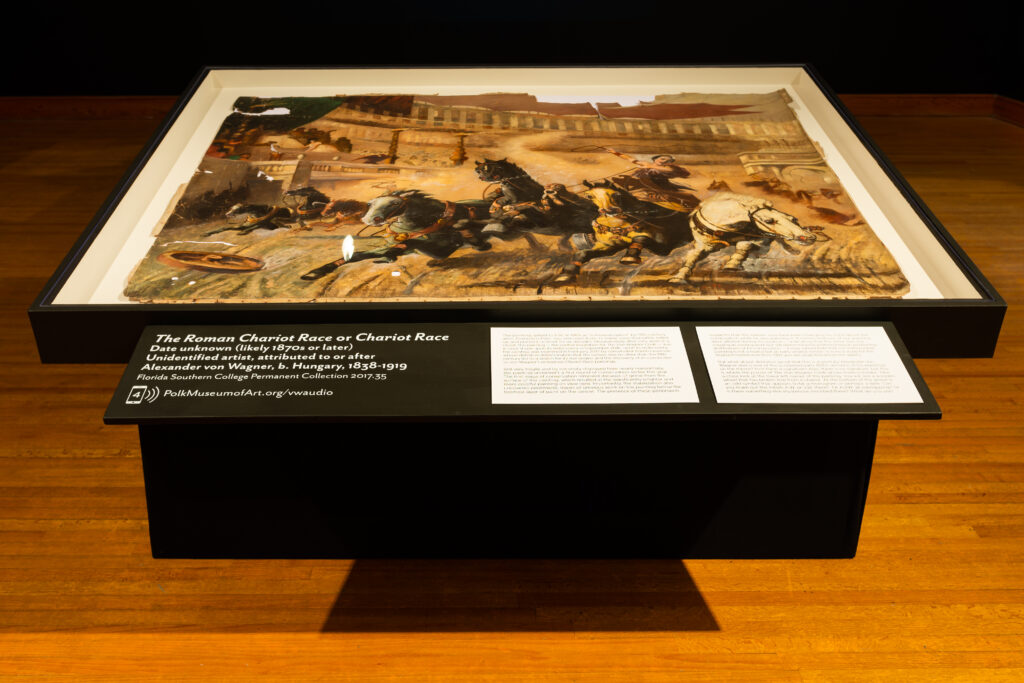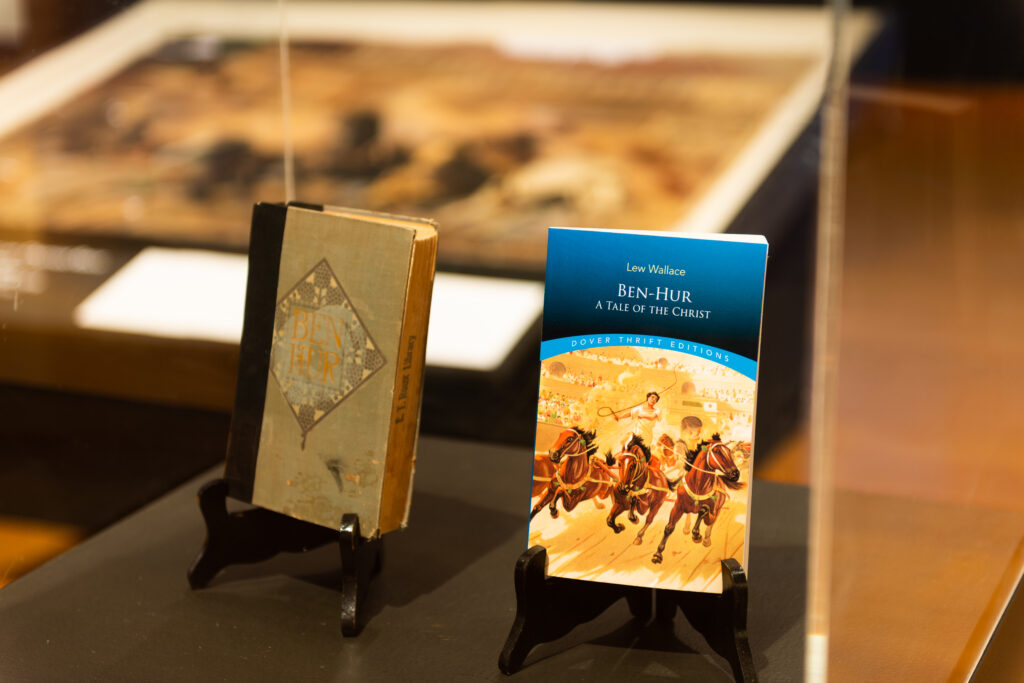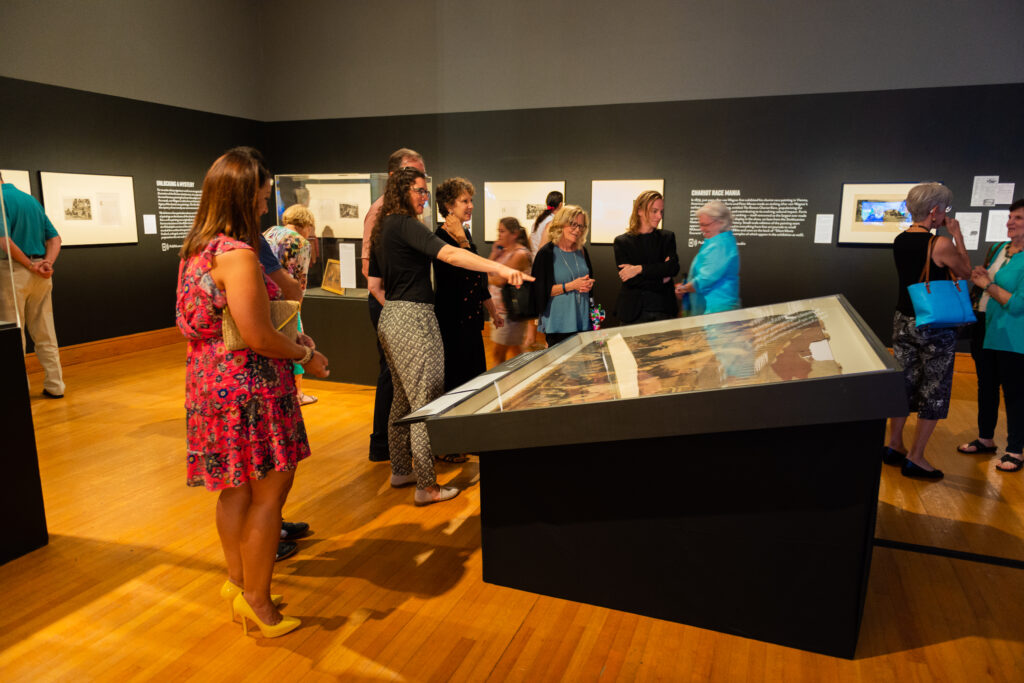A mysteriously rediscovered painting on Florida Southern’s campus is the centerpiece of the Polk Museum of Art’s current exhibition
In September 2016, Dr. Alex Rich was sitting in Florida Southern President Anne Kerr’s office when Kerr asked, “Alex, have you heard about this painting that Lynn Dennis [Kerr’s executive assistant] discovered?” Kerr then led the puzzled Rich to the end of the conference table where she unrolled a six-foot-by-four-foot painting of a chariot race. Gifted to the college in 1953, the painting was claimed to be a 17th-century Baroque piece and had been stored in a maintenance closet on FSC’s campus for nearly 60 years.  However, Rich, an assistant professor of art history at FSC, did not feel convinced of this origination. Captivated by the mystery behind this piece of art, he began to investigate more closely into the origins of the painting. A few months after the rediscovery of the painting, Rich had a conservator come out to Polk Museum of Art to dig a bit deeper.
However, Rich, an assistant professor of art history at FSC, did not feel convinced of this origination. Captivated by the mystery behind this piece of art, he began to investigate more closely into the origins of the painting. A few months after the rediscovery of the painting, Rich had a conservator come out to Polk Museum of Art to dig a bit deeper.
Rich was standing in a 45-minute wait at Disney World when he received the news that this painting actually originated from the 19th century. This news gave Rich more headway in his investigation, and he was determined to discover what this painting was by the time he boarded the Haunted Mansion ride at Magic Kingdom.
After a deep dive into Google images, Rich found that the composition matched that of a famous masterpiece of the 19th century called The Chariot Race (c. 1882) — a painting done by Hungarian artist Alexander von Wagner.
“After we did more research, we learned that this is a really influential piece. It really captured our image of what chariot racing looks like in our minds today,” says Rich. The cultural influence of this painting may have even inspired the movie Ben-Hur. The rediscovery of this painting led a one-and-a-half year study. “And that’s where the idea [for the exhibit] came from … this big exhibition came together and we decided to call it “The Von Wagner Code” because it’s about this search for answers,” says Rich. “And there are no easy answers to come by, which I think is really exciting for audiences,” he adds.
The rediscovery of this painting led a one-and-a-half year study. “And that’s where the idea [for the exhibit] came from … this big exhibition came together and we decided to call it “The Von Wagner Code” because it’s about this search for answers,” says Rich. “And there are no easy answers to come by, which I think is really exciting for audiences,” he adds.
This is the first-ever exhibition to focus on von Wagner. The large-scale exhibit showcases the history of the chariot race paintings and includes loaned pieces from the Smithsonian Museum of American History, Library of Congress, and other institutions from around the world.
Even with many questions answered, there are far more unanswered ones remaining. For example, in the The Chariot Race painting there is a cryptic symbol in the corner of the stray chariot that they are still unable to trace its meaning. “It’s one of the central mysterious … why we ended up calling [the exhibit] ‘The Von Wagner Code,’” says Rich. This exhibition highlights not only artwork, but how the artwork came to be a part of this overall study of von Wagner. “You see all different artifacts within this show in addition to the painting itself, which forms this great masterpiece,” says Rich. “And within the show itself, we have an original study of the painting.”
This exhibition highlights not only artwork, but how the artwork came to be a part of this overall study of von Wagner. “You see all different artifacts within this show in addition to the painting itself, which forms this great masterpiece,” says Rich. “And within the show itself, we have an original study of the painting.”
With the exhibition running until September 16, there’s still time to view “The Von Wagner Code,” be a part of its ever-evolving story, and help crack the code. “An exhibition like this, which is very artifact based, shows you that anyone can join in on the search for answers,” says Rich.
For more information on the exhibit, including audio guides and an in-depth essay written by Dr. Alex Rich, visit the PMoA website.
